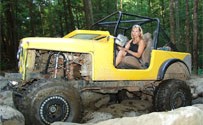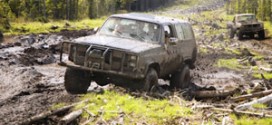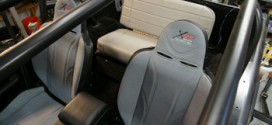
The summer season is nearly here, so now seems a good time to ask yourself, in what shape is one of your most important pieces of camping equipment – the tent?
Recent research shows that more than one in 10 campers will be looking to purchase a new tent within the next year. Durability, size and weather resistance are among the key factors they’ll consider when making their purchase decisions.
Choose Carefully

The tent is one of the most important pieces of camping equipment. When chosen carefully, it can serve as a strong foundation for years of enjoyable experiences.
Most of today’s tents are lightweight, easy-to-set-up and come in cabin styles, domes and other geometric shapes. They offer a variety of storage, comfort and ventilation options such as pockets, gear lofts, attached doormats, air vents, windows and cooler ports. Other variables include size, weight, color and price; but the paramount consideration should be weather protection.
Above all, a tent should remain standing and keep its occupants dry. Good tents offer many integrated weather protection features, such as taped seams, weather-resistant fabric and an adequate rainfly. All rainflies are not alike, so a careful evaluation should be made. A partial rainfly that covers the doors and windows, like an awning on a house, should be the minimum standard for protection. This protects the tent body very well in downward rains. A full rainfly covers the entire tent and will often have a vestibule for extra storage of gear outside of the sleeping area. This feature will cost more, but is very helpful in extreme conditions such as cold weather, snowfall and heavy driving rain.
In addition to the rainfly, other weather-protection features to check for include:
- Taped & protected seams. Are the seams on the underside of the rainfly taped? Are the tent’s interior seams inverted to hide the needle holes inside the tent, away from the elements?
- Waterproof floor. If there are seams on the tent floor, are they welded together to eliminate needle holes that could lead to leaking?
- Weather resistant fabric. Do the fabric, thread, webbing and zippers have special coating to increase their weather resistance?
- Zipper protection. The zippers on the doors are vulnerable areas; is there anything covering them or are they exposed to the elements?
- Strong frame. Are the poles sufficiently strong and flexible to withstand wind?
- Testing. Has the manufacturer tested the tent in rainy and windy conditions?* Does the manufacturer guarantee that the tent will perform as expected?
Together these features help ensure that, no matter what Mother Nature throws their way, tent campers can emerge happy and dry, ready to enjoy the rest of the camping trip.
“On a camping trip, the tent is your home away from home,” says Trevor Hinz, Coleman’s tent product manager. “We want to make sure campers are happy with their tents, so they’ll enjoy their camping experience and be back for more.”
*Coleman has a rain room in its factory to rain upon its tents and provide simulated weather conditions, from a light spring drizzle to a heavy downpour. Coleman has also built a wind machine capable of blowing strong winds directly at its tents. These tests have helped in evaluating new technologies and designs. To see a short video, click here: Coleman Tent Testing Video.
To Consider Before Buying a Tent

- Number of people in the camping party.
- Length of the camping trip and time spent inside the tent.
- Amount and size of gear, including items such as cots, airbeds and backpacks
- Distance to campsite where tent will have to be carried.
- Sleeping space desired per person.
- Headroom needed inside tent.
- Terrain, climate and expected temperatures.
Knowing these things will help with selecting a tent with the appropriate square footage, ceiling height, weight, fly coverage and more. Knowing what is needed or desired will ensure that the tent meets minimum requirements while also preventing “overbuying” or spending more for a tent than is necessary.
To Do Before Camping with a New Tent
- Set up the new tent at home first, to become familiar with it and avoid any problems that could arise at the campsite.
- Put airbeds, sleeping bags and other gear inside to make sure there is enough room for sleeping and storage.
- For extra protection, seam seal the tent’s interior before using it for the first time and at the beginning of each camping season.
- Purchase plastic sheeting or a tarp to place under the tent to protect the tent floor and prolong the life of the tent. It should be slightly smaller than the tent’s floor.
- Pack extra tent stakes and a mallet.
All of these preparations – as well as arriving before dark so there is time to locate a favorable campsite including a level area for the tent – will contribute to a successful camping experience.
To Properly Care for a Tent
- Tent should not be set up any longer than necessary. Excessive exposure to sunlight can damage fabrics.
- All trash should be removed and dirt swept out from inside before tent is taken down.
- Stakes should be removed by pulling on the stakes themselves, not on the tent fabric or the tent stake loops.
- To avoid mildew and odors, tent should be dried completely then stored in a cool, dry place.
The Coleman Company, Inc. Phone: (800) 835-3278
Email: consumerservice@coleman.com
Website: www.coleman.com
 4x4Review Off Road Magazine
4x4Review Off Road Magazine



